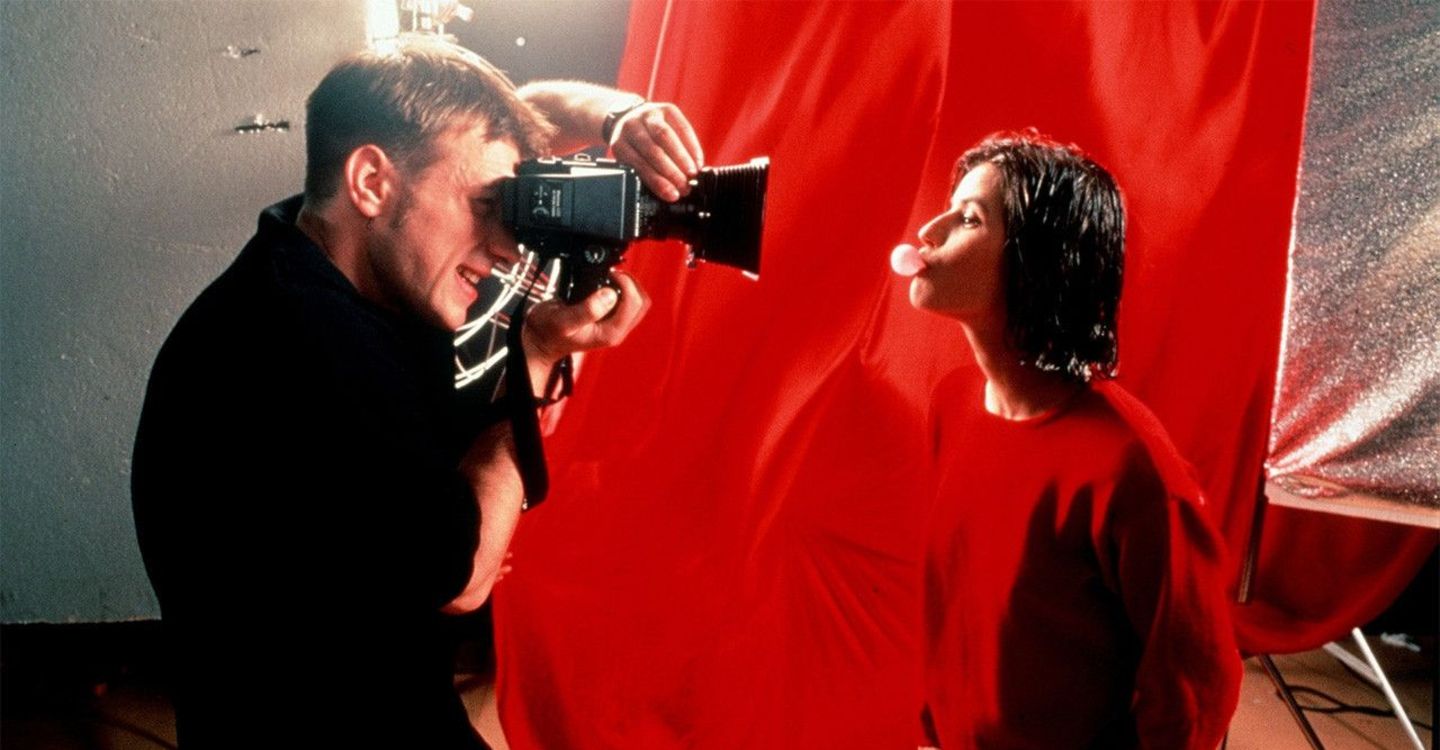
“Films use light and color to tell a story in a special narrative way,” says filmmaker Martin Scorsese, adding that such storytelling techniques “…deliver a strong emotional and intellectual impact on the viewer… [This realization] made a very strong impression on me and has affected how I try to use color in all of my films.”
The following list, a scant ten titles, dares to offer Taste of Cinema’s selection of the 10 finest examples of color use in motion pictures. While a lengthier list would have obviously been more inclusive, the 10 movies selected here really do represent the pinnacle of eye-popping and emotionally overpowering color use. Don’t miss these films (but please do add your suggestions in the comments section below). Enjoy!
10. The Grand Budapest Hotel (2014)
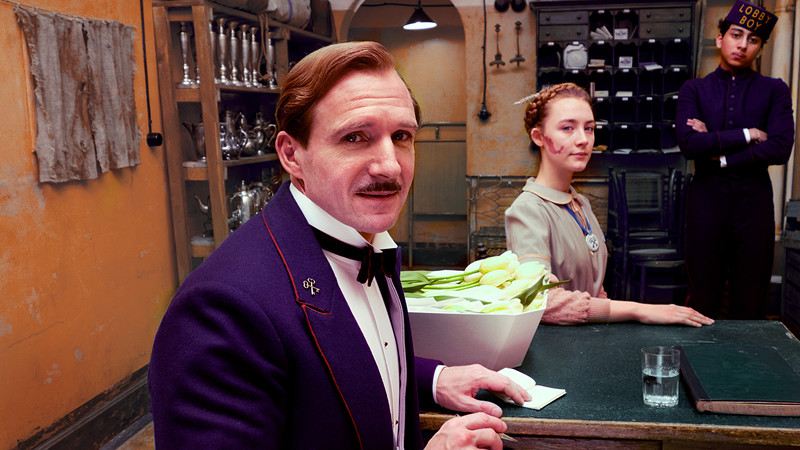
Gossamer-like, quite lovely and ever wistful, Wes Anderson’s The Grand Budapest Hotel thrums with the dual dispositions of the sublime Golden Age director Ernst Lubitsch and the jam-packed chapter and verse of Stefan Zweig. In this calorie-rich and joyously effete film, exuberance is the mainstay, as it exists in a baroque bubble of an imagined Old Europe where period styles, historical allusions, and joyful generic conventions intersect amidst a seeming compendium of potential films of adventure, emotion, humor, hubris, and tragedy.
The luxury hotel setting, carefully constructed by production designer Adam Stockhausen (exteriors) and Anna Pinnock (she designed the interiors), is the anchor of a multi-hued shaggy dog story that unfolds over three distinct timelines, where each is shot in three different ratios; 2.35:1, 1.85:1, and the classic 1.33:1.
Among the many eras that Anderson revisits, there are tangible elements of gothic romance and mystery––Hitchcock’s The Lady Vanishes (1938) springs to mind––and with all the trap doors, secret passageways, evil assassins, and sketchy monks, not to mention the inspired inclusion of a secret society of hotel concierges, there’s nods to more Hitchcock (The 39 Steps and Notorious perhaps?) and British Secret Service/spy films à la Carol Reed.
Throw in some stop-motion sequences, a splash of kink, pastiches of American-style comedy of manners, World War I espionage, romantic comedy, broad slapstick, elements of farce, and the feeling of peering into, who knows, Orson Welles toy box maybe? There’s so much stylistic color-crazy variety––even a monochromatic melodramatic respite––that the eye and the mind never rest.
9. The Umbrellas of Cherbourg (1964)
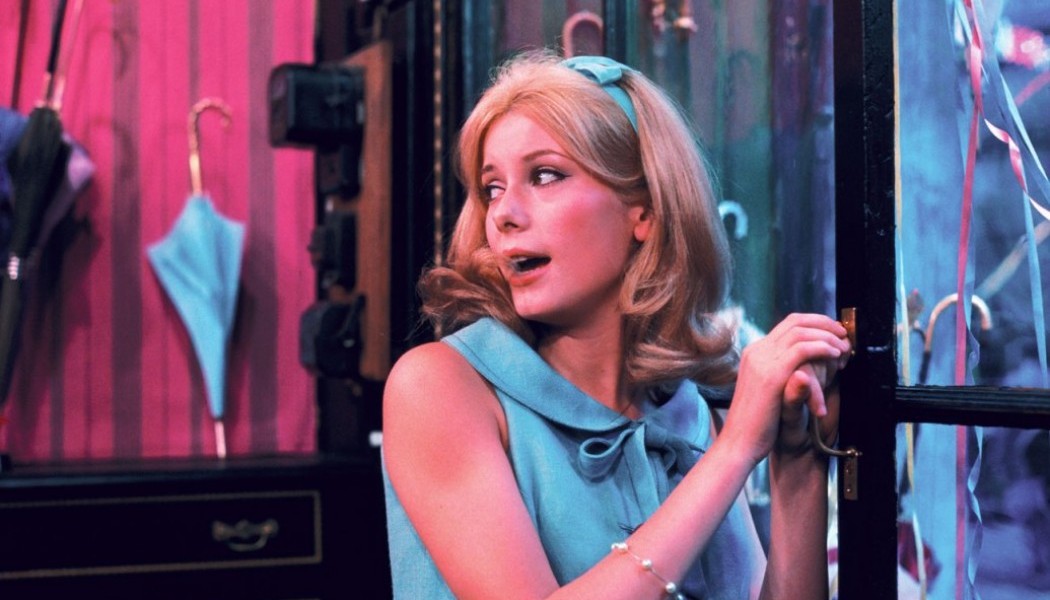
There really isn’t another movie like The Umbrellas of Cherbourg, Jacques Demy’s 1964 pastel-hued, operetta masterpiece. A simple story of love unfulfilled, yes, it also introduced Catherine Deneuve to the world.
Young lovers Geneviève (Deneuve) and Guy (Nino Castelnuovo) have their whole lives ahead of them. Geneviève lives with her mother and helps her run an umbrella shop. Guy is a mechanic who lives with his ailing aunt. The year is 1957 and the two lovers have plans to marry. Guy is drafted to fight in the Algerian war, an event that pulls the two apart indefinitely. It’s a simple story of love unfulfilled, told effectively in a three part structure with every line of dialogue sung like you might find in an opera.
“Jacques Demy’s movies are soaringly lyrical and romantic, but they always have extremely sharp edges and undertones – often bittersweet, sometimes just bitter,” raved Martin Scorsese. “The effect is stunning: Between the color and the music, every place and every object seem to vibrate with emotion.”
The the cascading use of color will have your eyes overwhelmed while the emotional heft of The Umbrellas of Cherbourg breaks your heart in the most beautiful way you can imagine. Sublime.
8. Suspiria (1977)

An immersive experience like no other, Italian auteur Dario Argento’s Suspiria is spine-tingling sensory cinema in overdrive. This nightmare fairytale is a delirious masterpiece from it’s shocking first frames––involving an extreme and impudent double homicide aversion––to its nerve-shattering unforeseeable finish.
Unfolding in the ideal Gothic setting, a menacing European ballet institute called the Tanz Dance Academy––actually a front for a coven of murderous witches––this is Argento’s most shocking showpiece and a veritable buffet of overstated and gloriously imposing color.
Jessica Harper is perfectly cast as Suzy Bannion, the new American student at the institute who straight away picks up on the bad vibes and hostile gestures going around campus.
Primitive colors, cinematically charged sequences of OTT majesty, appallingly violent deaths delivered with the baroque virtue of a music videos dressed in giallo regalia, strange supernatural elements, and Hitchcockian affection. As solid deposition of auteur theory––Argento is the Sergio Leone of horror cinema––Suspiria is a hypnotic and self-reflexive powerplay of atmospheric terror.
The influential and overpowering soundtrack by Goblin is an absolute devilish delight, and when combined with the visual style on shrewd, manipulative and monstrous display there really is no other horror film as dazzling, destructive, prismatic and ravishingly refined as Suspiria. This is the apex of vibrant, vivid horror and nothing can contest it (or would dare to).
7. Cries and Whispers (1972)
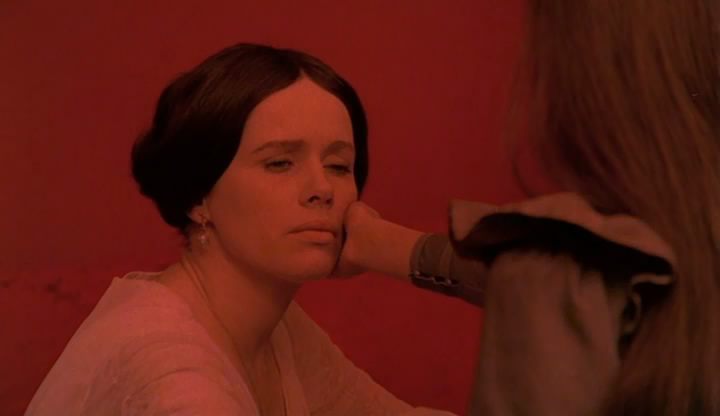
Legendary Swedish writer-director Ingmar Bergman’s redemptive journey into faith, grief, and the female psyche is on dynamic display in the color saturated passion play Cries and Whispers. So daring and dynamic is the Swede’s eye for red in this contemplative 19th century-set period piece that American film critic James Berardinelli celebrated the vibrant use of crimson to be so utterly effective in setting mood, that the “natural associations one makes with this color, especially in a story of this sort, are of sin and blood.”
Harriet Andersson is Agnes, slowly succumbing to cancer, her sisters are deeply and utterly immersed in their own mental anguish that they can little afford her the support she so desperately needs. Bergman’s greatest muse, Liv Ullmann, is Maria, a woman wracked with despair, confusion, and guilt at her husband’s troubling suicide, spurred by his discovery of her infidelity. Also abound in self-contempt and suicidal thoughts is self-harming sister Karin (Ingrid Thulin). It’s only Agnes’ pious scullery maid Anna (Kari Sylwan, wonderful), who at one time lost a young child, who can offer the empathy, understanding, and solace.
Raw and redemptive, and fastened with autumnal reds in sad and unnatural profusion––the furnishings and mansion’s walls cast so much crimson that the stark contrast to the women’s graceful gowns of white linger long in the mind.
Cries and Whispers is a chamber drama that feels saturated with the stuff of horror films––vampirism, resurrection––all ruddy in Bergman’s artistic and idiosyncratic universe. An autumn-set masterpiece in shattering scarlet.
6. Contempt (1963)
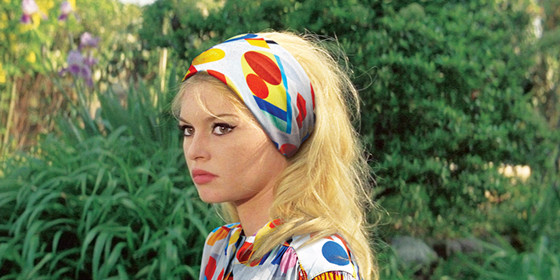
So many of celebrated French auteur, iconoclast, and La Nouvelle Vague progenitor Jean-Luc Godard’s films take a startling and sophisticated approach to color that just making a single choice for this list was a real challenge (1966’s bright confection Made in U.S.A almost made the cut), but his experimental and illuminating 1963 Cinemascope masterpiece Contempt may be his most far-reaching and influential work as far as color inspiration and utilization is concerned.
Dubbed “the greatest work of art in post-war Europe” by film critic/historian Colin McCabe, Contempt has also been described by Martin Scorsese as “one of the greatest films ever made about the actual process of filmmaking.” And a part of that self-aware process appears in the film right away with Godard’s immediate use of a startling red filter, and then moving directly into white/polychrome and blue filter (it’s a rather revealing love scene with star/sex symbol Brigitte Bardot and Michel Piccoli).
Subtitled “the story of a marriage”, Contempt tells the tale of a screenwriter named Paul Javal (Piccoli), hired by art film philistine Jeremy Prokosch (Jack Palance) to bring to life an adaptation of Homer’s “The Odyssey,” being attempted by legendary director Fritz Lang (as himself). In the mire of this unruly compromise between art and commerce is Paul and his stunning wife Camille (Bardot).
Primary colors abound (red represents desire, blue the death of desire, and so on), as does Godard’s artistic leanings towards experimental collage, luxury objects, and the beauty of Bardot and the Mediterranean backdrop, too. As a beguiling masterpiece with a dramatic inundation of color and repetition, Contempt shimmers and shines, turning in the mind like a troubling yet ornate jewel.